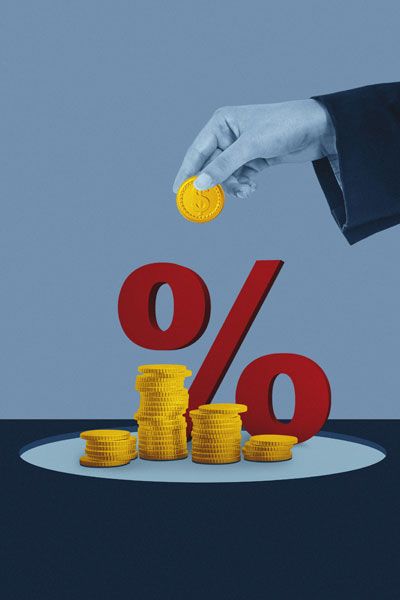Eric Schuck: Interest rates raise red flag we can't afford to shrug off

Specifically, when I need to redirect a student in a gentle, Dad-joke, sort of way, I quote the inimical grammarian Inigo Montoya: “You keep using that word… I do not think it means what you think it means.”
Right now, I really want to put that line up on billboards across the United States, specifically in response to confusion about the connection between interest rates and inflation. Let’s start by clearing up one matter.
High interest rates do not trigger inflation. Rather, interest rates represent the Federal Reserve’s most common tool for combating inflation. So interest rates rise or fall in response to inflation.
If spending is too high, relative to the volume of goods and services in the economy, the Federal Reserve increases interest rates to raise borrowing costs, thus discouraging additional spending. Alternatively, when spending is too low, the Fed lowers rates, although that tends to work less quickly than raising rates.
Taken together, this means changes in interest rates serve as a pretty decent predictor of inflationary expectations in financial markets and beyond.
Suppose a bond has a 5% yield.
If inflation is running at 3%, the actual yield on the bond is only 2%, after taking inflation into account. Consequently, most lenders build inflation expectations into the interest rates they charge, including those on bonds they may purchase.
When interest rates on bonds start creeping up, either through rising interest rates on newly issued bonds or lower prices on existing bonds, it’s a solid indication from lenders that they are anticipating future inflation. The same goes for the Federal Reserve.
Last year, the Fed started dropping interest rates, a clear signal it believed inflation was or was about to begin cooling off.
Other interest rates, notably mortgage rates, initially fell in response to the Fed’s moves. However, things have since changed.
Today, prices on existing bonds are falling, serving to raise the interest rate on mortgages, one of the more critical interest rates in the economy. It started rising again late in 2024 and is now back over 7% across much of the country. In response, the Fed held fast on interest rates at its most recent meeting.
Clearly, the Fed and the nation’s financial markets have changed their assessment on inflation. Their actions suggest inflation is not continuing to decline and could begin rising again in the future.
The critical question is why? The primary source appears to be the current policy environment, and more specifically, its tariffs and federal deficit elements.
Tariffs raise prices on imports while simultaneously shrinking the exchange of goods and services in the economy — a particularly nasty sort of inflation. Additionally, the potential extension of the 2017 Tax Cut and Jobs Act, which ballooned federal deficits and raised the federal debt by almost $4 trillion, even before COVID relief efforts raised the debt further still, threatens even higher federal deficits creating even more inflationary pressure.
Toss in the extra market uncertainty of turning federal spending off and on again without warning, something the financial markets absolutely hate, and it’s no wonder interest rates are creeping up again — with all the consequences that entails for consumers.
Taken as a whole, both the Fed and financial markets are sending out inflation warnings. That’s unusual, and more serious than people may realize.
While “The Princess Bride” acknowledges only two great blunders in the world — “never get involved in a land war in Asia” and “don’t go in against a Sicilian when death is on the line” — this suggests there may actually be a third: Ignoring the messages interest rates send us is dangerous.
Eric Schuck holds a Ph.D. in economics from Washington State University and a professorship in economics at Linfield University. He’s twice been honored with Fulbright Fellowships to work and study abroad, once in South Africa and once in Lebanon. An officer in the Navy Reserve, he’s also served a pair of active-duty military tours in the Middle East. He makes his home in McMinnville with his wife and three children.











Comments